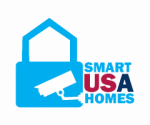
Whether you’re thinking about purchasing a smart home or have already done so, there are some pros and cons to consider. By understanding the pros and cons, you’ll be better equipped to decide if the smart home is right for you.
Home security
Choosing a smart home can be a great way to increase your safety. However, there are some drawbacks that you should consider. Some of them involve privacy issues.
Smart devices require a certain amount of internet access. If your internet connection is unstable, it will be difficult for you to control your smart home devices.
You should also make sure that your Wi-Fi network is secured. Hackers can get into your devices and steal information. The security of your entire security system is at stake.
The best way to prevent a cyber attack is to make sure that you have a secure Wi-Fi network. This is important because hackers can access the Wi-Fi network from anywhere.
Smart homes can also be a great way to save money on energy. They can be controlled from your smartphone. You can set routines to run certain tasks. For example, you can tell your thermostat to stay at a certain temperature for a certain amount of time. These routines may trigger other actions in your connected home.
Energy savings
Having a smart home can be a great way to save money. By using smart devices, you can save up to 40% of the energy you use. If you have a smart thermostat, you can also save up to 15% on your energy bills. Smart light bulbs are another great way to save money on your energy bill. The bulbs use up to 75 percent less energy than incandescent lights.
When you install a smart bulb, you can have it react to other smart devices in your home. For example, a smart bulb can turn on when you walk into a room and turn off when you leave. You can also have it react to motion sensors and other smart devices to reduce energy usage.
Another great way to save energy is by using a smart power strip. These strips can shut off energy to standby devices, such as televisions, printers, and microwaves. The National Renewable Energy Laboratory estimates that a smart power strip can save a household up to $200 a year.
Simplicity of caregiving
Embracing smart technologies to improve the quality of life of older adults could be the next big thing. The technology has the potential to enable shared caregiving, and mitigate risks pertaining to security and surveillance. Similarly, technology aided household practices could lead to energy sustainability and efficiency. Interestingly, smart home technology has been endorsed by the energy industry as well as governments.
The benefits of smart homes are not limited to improving the quality of life of older adults. The technology can be used to support the homemaker or caregiver by performing as an active agent in household care practices. Similarly, the technology can be used to improve the quality of life of householders by enhancing their climate change literacy. Moreover, the technology can be used to improve the lives of households by reducing vulnerability and surveillance. Considering the potential for the technology to improve the quality of life of older adults, it is important to ensure that the technology is used for its intended purposes and that the appropriate policies are implemented to ensure the requisite level of accountability.
Reliance on technology
Using technology in your smart home is not always a good idea. In fact, it could be dangerous. You could end up relying on technology so much that you don’t even know what you’re doing. This is a major vulnerability. And when your technology goes down, you could feel helpless. But you can avoid this by being independent and knowing when to act on your own.
There are two major types of technology in smart homes. The first type is for health and safety. These homes have automated devices and sensors, and centralised software controllers. The second type is for daily living tasks. These homes have actuators, and automated devices.
The first type of technology can be useful in transitioning from a demand-led system to a supply-led one. However, the technology is not always easy to understand. This is because you don’t have the same sense of control over the systems as you would in a traditional home.
